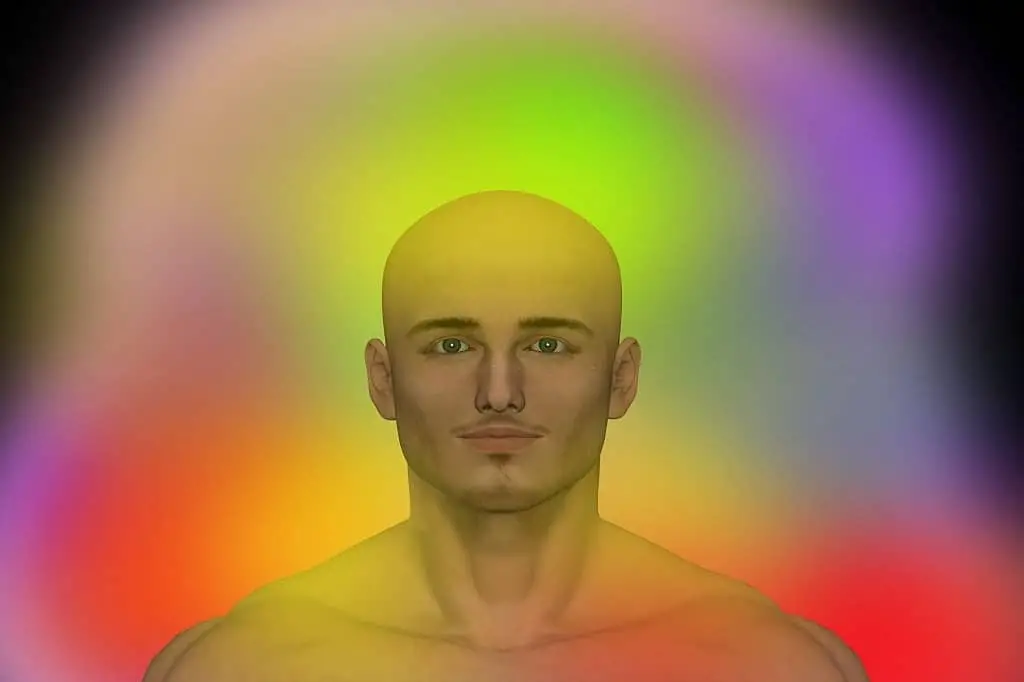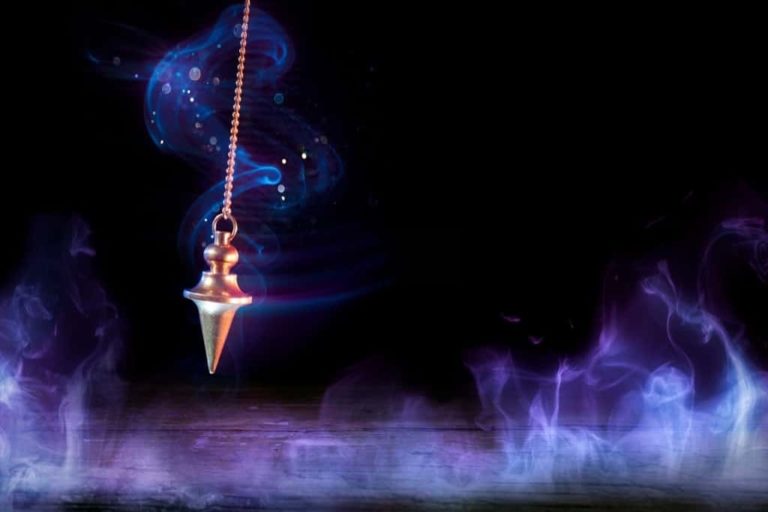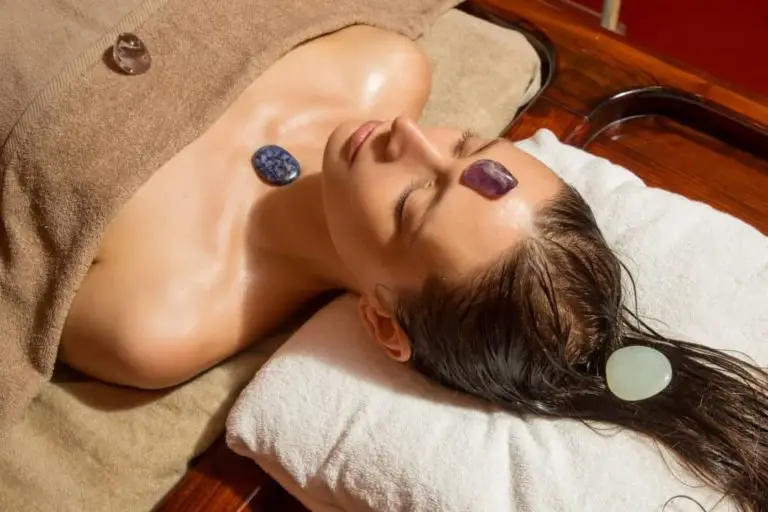What Are The Colours Of The Aura And What Do They Mean?

You have likely heard someone say that they can see your aura or that your aura needs cleansing and for many people, this is an unfamiliar concept. However, each one of us has an aura and what a lot of people don’t know, is that there is more than one type.
In this article, we are going to look at the different aura types as well as finding out some interesting facts that will tell you everything you need to know about your aura.
Table of Contents
What Is An Aura?
Humans, like any other object, including the earth itself, radiate an electromagnetic field, whilst the energy from this is considered to be low-level electricity, it is, without a doubt present.
What is particularly interesting is that this electric field or aura is made up of seven different layers and each of these relates to various aspects of your health – spiritual, mental and emotional.
Since the layers exist alongside one another, it is commonly accepted that they have the ability to interact and, as a result, influence your general health as a whole.
There are people who are more easily able to see an aura, and when they do, they see each of the seven layers as a light which surrounds your physical body – as though the energy is literally radiating from it.
There are some who remain sceptical that auras exist, but there is little denying that this energy is present, however, there are various philosophies that argue what an aura truly is.
Since everything gives off energy, there is little doubt that the aura is made up of this but whilst some would argue that the energy is a manifestation of both our physical and spiritual bodies, others would say that it is not.
For some people, the aura does not represent our current state of being. One thing that most people agree on, however, is that those around you can have an impact on your aura.
For example, you will have likely experienced people who make you excited, nervous or any other emotion, and this is thought to be their interaction with your aura as a result of their own energy.
Auras And Vibes
Many people are somewhat confused as to whether an aura and a vibe are the same thing. Your vibes – or vibrational frequencies are what the aura is created from and they are able to communicate your emotions with other people, In other words, those around you will be able to sense if you are happy, scared, angry or otherwise without you physically telling them.
Additionally, when two auras meet, there is either a good vibe or a bad vibe between them and for this reason, we either instantly click with another person or take an instant dislike, all in relation to how our energies interact.
Are There Different Aura Types?
There are different types of auras in the sense that each layer of your aura is believed to correspond to each of the seven chakras – or wheels of energy which can be found running the length of the spine in each and every one of us.
Each of the chakras has a different colour and this is extended to the auras, each one having a relative colour to the chakra with which they correspond.
In every person, the layers may appear differently, for example, some layers may appear more vividly or dominantly whereas others might be less visible, even to those who have a greater ability to see auras.
- The root layer, which corresponds to the chakra of the same name is sensed as red and can be found somewhere between the pelvis and tailbone.
- The sacral layer, which corresponds to the sacral chakra and is seen as orange and is located just below the belly button.
- The emotional layer which corresponds with the solar plexus chakra and is located around your middle, just below the lower ribs.
- The astral layer, which corresponds with the heart chakra, is green in colour and is seen around the chest.
- The spiritual layer which is related to the throat chakra and is blue and can be seen at the base of the throat.
- The intuition layer which corresponds to the third eye chakra is indigo and can be found in between the eyebrows at the centre of the forehead.
- The absolute layer, which is related to the crown chakra is said to be white and can be seen at the top of the head – this is probably the most widely recognised aura for those who do not have deep knowledge on the subject.
What Do The Different Auras Mean?
Each of the layers of the aura has a different meaning, and their appearance can give away clues to our general health and wellbeing. The red physical layer depletes whilst we are aware and, when we sleep, is energized. This aura is deeply connected to our physical health and to the five senses.
The astral layer is closely related to our sensitivity as well as being connected to our ability to love ourselves and other people.
There are two layers that are related to our mental health – the lower mental layer and the upper mental layer, the former is frequently used during our waking hours and provides us with logic and reasoning.
It is often used during our work life and education as well and how we practise our morals and beliefs. In contrast, the higher mental layer is connected to how we care for ourselves and other people and is sometimes thought of as a bridge between each of the other layers of the aura.
Our spiritual layer allows us to make connections with other people concerning our spirituality. This aura is believed to shine brightly when we engage in spiritual practices with others including prayer, teaching and meditation, amongst others.
The intuitional layer is very closely related to the third eye and allows us to be more intuitive. This might include being better able to interpret dreams or to trust our gut when it is telling us something.
Finally, the absolute layer has the great responsibility of balancing each of the other layers, with many referring to it as a net. It gives us a sense of harmony and peace.
What Is The Meaning Of The Aura Colours?

As well as each aura having its own connection to various aspects of our being, the different colours that are radiated relate to and mean different things. Most people will have one colour that appears more dominantly than others and this can be a clue to their emotions, mentality and spirituality. Let’s explore this a little more closely.
Reds and Pinks
When we see a strong red colour in the aura, we know that the person is experienced deep-seated emotions such as love, anger or pride.
Owing to the fact that these are very primitive colours, they may also demonstrate that the individual feels the need to demonstrate their personal strength, the red light may appear deeper the stronger these emotions are.
A pink light can let us know that the person feels vulnerable and whilst this may be related to their physical body, it can also be related to their quest of finding true love.
Indigo and Blue
If you see a deep level of blue in a person’s aura, you can feel confident that this person is calm and strong. These types of people will usually find their peace in places that others may not and demonstrate a greats sense of intuition. These people may also demonstrate a greater ability for human interaction but may also mean that this individual possesses strong psychic abilities.
Magenta
It is not common to see magenta as the stand-out colour in an aura and when you do, it tells you that the person is eccentric and likes to run against the wind – they may feel as though they need to prove a point and not fit in with the norm. Quite often, the person may be facing struggles, but not always negative ones. Additionally, people with dominant magenta auras may have undiscovered creative talents.
Orange
When we have an orange aura, it represents vitality and is often seen in those who are successful when it comes to sports and personal performance. However, there is also a link to our sexuality where orange auras are concerned and this many demonstrate a person who possesses great sexual prowess.
Gold and Yellow
For anyone who places a great value on discipline, a gold or yellow aura will likely be dominant. Yellow tends to be the more dominant shade in those who are great philosophers whereas gold leans more towards those who are struggling to find their true place in the universe.
Tan and Brown
These colours are closely related to the earth and as such, are usually dominant in those who have problems with logic and method in their lives. These people may also find that they over-think issues that are controversial and often come across as being uptight.
Purple Shades
A deep purple light represents a person who is nearing true freedom in their spirituality and those who require high levels of interpersonal contact may have a strong purple aura.
Green
The dominant colour of an aura would be green when a person is in good health or is going through deep healing, either physically or emotionally. It can demonstrate that the person has a good balance in all aspects of their being and this is usually displayed in their relationships.
White
It is very rare to come across a person whose aura is dominantly white and this is because it is displayed only by those who have a very deep spiritual awareness. This might be an enlightened leader such as a guru or yogi.
Black
Many people may immediately think of a black aura as been tremendously negative but this is not always the case. It certainly should not be used to assume that the person has undesired spiritual qualities.
However, those with a dominantly black aura may be being protected as a result of physical, mental or emotional ill-health. These people may experience strong emotions such as fear or anxiety.
Do The Colours Of The Aura Change?
As we navigate our way through life, our emotions, physical health and spirituality evolve, grow and change and this is reflected in our aura. What may be a dim aura in the present, could change to become a bright, vibrant aura in the future and the colours of the aura may also change as you evolve.
Cleansing The Auras
There are many people who are able to offer aura cleansing or you may be able to do this yourself. Cleansing the auras allows them to repair and heal especially during particularly trying times and there are a lot of ways in which you can do this.
- Meditation can improve your emotions and mental health and this will be reflected in the aura.
- Reciting positive mantras or affirmations can be used as a way to wash away negative energy and cleanse the aura.
- Using a visualisation where you imagine any negative energy being washed away from the aura can be particularly effective.
- If you have a serious energy imbalance, a spiritual teacher or leader may be able to offer you a way to identify the problem and heal this energy.
- Smudging with sage is frequently used to cleanse the aura.
Conclusion
Every human has an aura, and there is no way to remove it – this would be akin to trying to erase your emotions or your very being. Your aura may not be directly visible to you, but some people have a greater sense of this and can see auras as colours – each one corresponding to one of the seven main chakras.
The aura is made up of seven layers and the colours of these relate to various aspects of our being such as our love for ourselves and others and our intuition, amongst other things. However, most people will have one colour that is more dominant than others and this is a key to understanding the personality and nature of the individual.
Since our auras interact with those of other people in different ways, we may notice that we are more drawn to some people and repelled by others. The aura may also become damaged and in order to repair it, we can practise various cleansing techniques to bring back its shine and luminosity.







